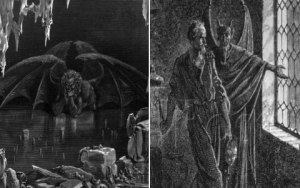Tarot card combinations, or "combos," refer to the collective meaning derived from two or more cards appearing together in a spread. Reading cards in combination allows for a more nuanced, detailed, and accurate interpretation than analyzing single cards in isolation. The interplay between cards reveals complex dynamics, underlying influences, and potential outcomes.
Core Principles of Interpreting Combinations
Understanding how tarot cards interact is fundamental to interpreting combinations. Key principles include:
- Mutual Influence: Each card in a combination affects and is affected by the cards surrounding it. The meaning of an individual card can be strengthened, weakened, or altered by its neighbors.
- Numerical Progression: The sequence of numbers can indicate a progression, development, or a story unfolding. For example, an Ace followed by a Two and then a Three can show the beginning, development, and initial fruition of an idea.
- Suit Dynamics: The interaction between the elemental dignities of the suits (Wands - Fire; Cups - Water; Swords - Air; Pentacles - Earth) is crucial.
- Wands & Cups: Passionate action driven by emotion, or emotions overwhelming drive.
- Swords & Pentacles: Practical application of ideas, strategic planning for material results, or thoughts being grounded in reality.
- Wands & Swords: Action fueled by intellect, decisive choices, or potential for conflict and hasty arguments.
- Cups & Pentacles: Emotional fulfillment in material security, nurturing investments, or emotional attachment to possessions.
- Fire (Wands) & Air (Swords): Can amplify each other, leading to rapid action or intense conflict.
- Water (Cups) & Earth (Pentacles): Generally harmonious, fostering growth and emotional stability.
- Major Arcana Influence: Major Arcana cards often represent significant life lessons or archetypal energies. When a Major Arcana appears in a combination, it typically sets the overarching theme or highlights a critical aspect, heavily influencing the surrounding Minor Arcana cards.
- Court Card Interactions: Court cards in combination can represent people influencing each other, different facets of one person's personality, or a situation involving multiple personality types or roles.
- Impact of Reversals: A reversed card in a combination can indicate blocked energy, internal challenges, or a deviation from the upright card's typical meaning, affecting the flow and interpretation of the adjacent cards.
Analytical Approaches to Combinations
Interpreting combinations involves synthesizing meanings rather than just listing individual card definitions. Common approaches include:
- Pairings (Two-Card Combos): This is the simplest form. The first card often sets the context or initial energy, and the second modifies or clarifies it, or shows an outcome or effect.
- Triplets (Three-Card Combos): These are very common and can be read in several ways:
- Linear Story: Card 1 (Beginning/Cause) -> Card 2 (Development/Action) -> Card 3 (Outcome/Result).
- Central Theme: The middle card acts as the core issue, with the flanking cards providing context or influences.
- Synthesizing Meanings: The core skill is to blend the keywords and energies of the cards into a cohesive narrative or message. Look for reinforcing themes (e.g., multiple cards suggesting new beginnings) or contrasting energies (e.g., a card of action next to a card of stagnation, indicating a struggle).
- Identifying Patterns: Look for recurring numbers, suits, or themes across the combination, which can emphasize a particular message.
Key Considerations for Accurate Interpretation
- Context of the Question: The specific question asked during the reading provides the framework. The combination should be interpreted in direct relation to that query.
- Positional Meanings: In a structured spread, the defined meaning of each card's position (e.g., "Past," "Present," "Challenge") will heavily influence how it contributes to any combination it forms with adjacent cards.
- Intuitive Resonance: While analytical skills are vital, intuition helps in discerning the subtle nuances and the most relevant message the cards are trying to convey. Pay attention to the overall feeling the combination evokes.
Mastering tarot combinations comes with practice. Start by analyzing two-card pairs, then gradually move to larger groupings. Consistent study and application will deepen your understanding of the rich tapestry of meanings that tarot combinations can offer.







